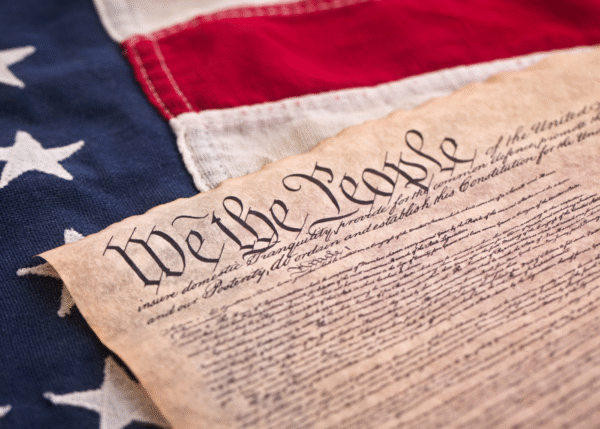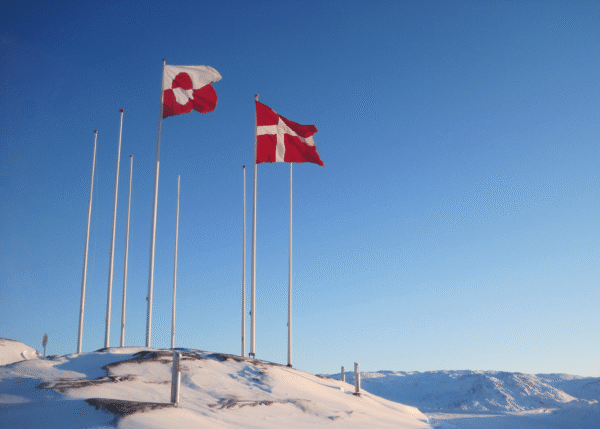FACT: Main likely impacts of Trump administration trade ‘deals’:
higher prices, uncertain export and investment benefits, policy instability.
THE NUMBERS: Extra tariff burden, February to mid-July 2025 –
| From all “IEEPA” emergency decrees | $51.6 billion |
| China and Hong Kong | $23.2 billion |
| Worldwide 10% | $22.2 billion |
| Canada and Mexico: | $6.3 billion |
* Customs and Border Protection summary, through July 13th .
WHAT THEY MEAN:
Though the administration has announced lots of July’s trade “deals” — the European Union, Japan, Korea, Vietnam, Thailand, Cambodia, Malaysia, Indonesia, the Philippines, Pakistan, Bangladesh — it hasn’t posted any actual agreement texts. In only one case (Indonesia) has published a “Joint Statement” with an agreed description of the contents. So lots about them is uncertain. With that noted, though, the arrangements appear to have three main features: higher prices for Americans, some commitments for exporters/intellectual property holders/investment seekers; and more future policy instability. More details and initial reactions to each –
1. Higher prices: First, bluntly put, most Americans will lose from these “deals.” Their common feature is a very high tariff, imposed by decree rather than legislation, on goods bought from abroad. Vietnamese-made goods like shoes and consumer electronics, for example, will get a 20% tax. So will pretty much everything from Taiwan and Bangladesh. Japanese and Korean products — cars, boats, matcha, MRI machines — get a modestly lower 15%, while things from the Philippines, Thailand, Cambodia, Indonesia, and Pakistan are at 19%. All are loaded on top of the regular, Congressionally authorized “MFN” tariff system. (“MFN,” the acronym for “most favored nation,” the term of art for the standard non-discriminatory approach to tariff rates.) The EU “deal” is somewhat different, imposing a 15% fee which replaces rather than being added to the regular MFN tariff rates. (Unless the regular rate is above 15%, in which case it just stays in place unchanged.)
For historical context, the overall average resembles the 19.8% tariff Franklin Roosevelt inherited from his predecessor Herbert Hoover in 1933. Alternatively, some specific product examples illustrate the daily-life impacts. Asian grocery stores buying cans of straw mushrooms from Vietnam, for example, will now pay 28.5% plus 6 cents per kilo. That’s three times the 8.5% plus 6 cents they were paying in March under the MFN tariff system. Auto repair shops buying Japanese or Korean brake-pads and fanbelts will pay 17.5% rather than 2.5% (and 15% for the German or Swedish equivalents); lovers of Dutch Gouda and Edam cheese, meanwhile, will pay 15% rather than the 10%. Or, in dollar terms, three months’ worth of “emergency decree” tariffs have already cost American buyers about $52 billion.
Tentative conclusion: Expect to pay more for things.
2a. Export commitments: Second, some Americans will benefit from export, intellectual property, and/or foreign investment commitments. Until the “deals” are published, we won’t know what these really are. But if the July 22 arrangement with Indonesia is a representative example, it includes some useful benefits and a lot of murkier “agreements to talk.” On the “useful” side, the U.S.-Indonesia “Joint Statement on Framework for United States-Indonesia Reciprocal Trade” unambiguously says Indonesia will “support a permanent moratorium on customs duties on electronic transmissions at the WTO immediately and without conditions”. (PPI view on the 30-year-old WTO “moratorium” and its value here.) The clauses on tariff and non-tariff issues, by contrast, lack timelines and feature cryptic phrasing: the U.S. and Indonesia “will work together to address Indonesia’s non-tariff barriers that affect bilateral trade and investment in priority areas” such as cars and agriculture, and “will negotiate facilitative rules of origin that ensure that the benefits of the agreement accrue primarily to the United States and Indonesia.”
Tentative conclusion: Wait to see the agreement texts before drawing any conclusions.
2b. Investment commitments: The arrangements with high-income allies also feature some commitments to invest in the United States, in the form of headline numbers: “$600 billion” from the EU, a “$350 billion” Korean investment fund, and “Japan will invest $550 billion directed by the United States to rebuild core American industries.” To put this in context, in 2024, Japanese firms invested $39 billion in U.S. industries through FDI, and Japan’s holdings of long-term securities grew by $91 billion. So new Japanese investment in the U.S. would likely hit $550 billion naturally over a few years, and the commitment might mean very little in real life. Alternatively, and more positively, the U.S. and Japanese governments might encourage specific private-sector investments like Nippon Steel’s purchase of the troubled U.S. Steel corporation.
Tentative conclusion: Don’t expect much.
3. Uncertainty: Finally, the so-called deals’ lives may be short. They all originate in the April 2 decree declaring the U.S. trade balance to be a “national emergency,” and then using the International Emergency Economic Powers Act to override Congressionally set tariff rates. The specialized U.S. Court of International Trade’s “V.O.S. Selections vs. Trump” decision struck down all the “IEEPA” tariffs on May 28 as an impermissible grab at Congress’ Constitutional power to set rates for “Taxes, Duties, Imposts, and Excises.” The Court of Appeals heard oral argument on this ruling last Thursday, and the Supreme Court will probably get the case this fall. If the C.I.T.’s view holds up, the “deals,” tariffs, costs, and (probably) commitments could be gone by Christmas.
Nor are the courts the sole source of uncertainty — the administration itself is another. The “deals” originate in a belief that the U.S. trade balance is a “national emergency.” (Professional economists pretty much shred that idea here.) But the effect of any deals on trade balance will be only marginal. This is because (a) a country’s trade balance equals the gap between its savings and its investment; (b) combining July’s tax cut bill with higher tariffs almost certainly means a higher U.S. fiscal deficit, and therefore (all else equal) a somewhat lower U.S. national savings rate, and (c) barring some unexpected surge in family savings, or a collapse in investment, the trade deficit will probably rise. If that’s the case, the administration might rip up this year’s arrangements and start all over again next summer — as it has done with the first Trump administration’s 2018 renegotiation of the U.S.-Korea Free Trade Agreement, which it wrongly advertised at the time as having “secured changes that will reduce the trade deficit”.
Tentative conclusion: Don’t expect policy stability soon.
PPI’s four principles for response to tariffs and economic isolationism:
- Defend the Constitution and oppose rule by decree;
- Connect tariff policy to growth, work, prices and family budgets, and living standards;
- Stand by America’s neighbors and allies;
- Offer a positive alternative.
Compare and contrast:
The National Archives’ official Constitution transcript; see Article I, Sec. 8 for power to set rates for “Taxes, Duties, Imposts, and Excises”, and to “regulate Commerce with foreign Nations”.
And from the administration, the “Joint Statement” with Indonesia; “Fact Sheets” for Japan, Korea, and the European Union; and an overall summary.
Legal update:
Court of Appeals oral arguments from last Thursday.
The administration’s Court of Appeals filing.
Amicus brief from House and Senate Democrats defending Congressional tariff authority.
Economists’ amicus brief explaining that trade balances are not emergencies.
The Court of International Trade’s May 28th decision (see V.O.S. Selections v. Trump, #25-66)
… or direct to the V.O.S. Selections v. Trump opinion in a PDF.
International Emergency Economic Powers Act text.
A solution:
Rep. Linda Sanchez (D-Cal.) and all other Ways and Means Committee Democrats propose a revision of IEEPA, Section 301, and Section 232 to require Congressional approval of any new tariffs, quotas, or other trade limits under these laws.
And some econ. and stat background:
The IMF on the basics of savings, investment, trade balance, current accounts, when they might matter, and when they probably don’t.
And from the Census, a one-page sheet with U.S. exports, imports, and trade balances from 1960 to 2024.
ABOUT ED
Ed Gresser is Vice President and Director for Trade and Global Markets at PPI.
Ed returns to PPI after working for the think tank from 2001-2011. He most recently served as the Assistant U.S. Trade Representative for Trade Policy and Economics at the Office of the United States Trade Representative (USTR). In this position, he led USTR’s economic research unit from 2015-2021, and chaired the 21-agency Trade Policy Staff Committee.
Ed began his career on Capitol Hill before serving USTR as Policy Advisor to USTR Charlene Barshefsky from 1998 to 2001. He then led PPI’s Trade and Global Markets Project from 2001 to 2011. After PPI, he co-founded and directed the independent think tank ProgressiveEconomy until rejoining USTR in 2015. In 2013, the Washington International Trade Association presented him with its Lighthouse Award, awarded annually to an individual or group for significant contributions to trade policy.
Ed is the author of Freedom from Want: American Liberalism and the Global Economy (2007). He has published in a variety of journals and newspapers, and his research has been cited by leading academics and international organizations including the WTO, World Bank, and International Monetary Fund. He is a graduate of Stanford University and holds a Master’s Degree in International Affairs from Columbia Universities and a certificate from the Averell Harriman Institute for Advanced Study of the Soviet Union.
















